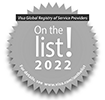- The study determines the economic benefits of increased physical activity globally, and for 23 individual countries.
- It shows that if all adults aged 18-64 walked just 15 minutes more a day, the world economy could grow by an average of $100 billion a year until 2050.
- Further findings show that if the physically inactive were to reach the World Health Organization’s recommended levels of exercise, employees would gain up to five additional days of productive time each year, and the global economy would grow by an estimated $220 billion every year. Vitality estimates that life expectancy could increase by at least 2.5 years, on average, for a person aged 40 years in this scenario.
- In addition to increasing physical activity among individuals who are currently inactive, if those individuals who are currently active increased their physical activity levels by 20 percent, the global economy could grow by more than $360 billion every year; equivalent to the size of Singapore’s economy. Economic gains for the US economy would be $95 billion a year until 2050.
- Economic gains can be attributed to the reduction of premature deaths in the working age population, improving rates of sick leave and improved levels of workplace productivity associated with regular exercise.
The results of a groundbreaking academic study from the independent nonprofit research institute, RAND Europe, shows the relationship between global economic growth and physical activity. Commissioned by Vitality, the study reveals significant benefits to gross domestic product (GDP), workplace productivity and life expectancy if physical activity levels increase globally.
The economic improvement arises from lower mortality rates (more people alive and contributing to the economy), reduced absenteeism, and lower presenteeism driven largely by the impact of physical activity on mental health.
“This groundbreaking study provides proof of the relationship between physical activity, productivity, mortality and economic growth,” said Tal Gilbert, CEO of Vitality USA. “The stakes are enormous for the individual and for our society as a whole. This is why we are leading efforts with Vitality-linked insurers, such as John Hancock, to make 100 million people 20 percent more active by 2025, as part of our global pledge.”
Since 2015, John Hancock has partnered with Vitality to reward its life insurance holders for healthy behaviors, such as physical activity, mindfulness, improved nutrition and preventive screenings.
“At John Hancock, we’re committed to helping our customers live longer, healthier lives. As part of that promise, we announced last year that we will offer Vitality on all of our life insurance policies going forward,” said Brooks Tingle, President and CEO of John Hancock. “When more people take small, everyday steps to improve their health and wellness, our society and global economies benefit. We’re proud to be a part of this important effort.
The study aims to enhance the understanding of how inactivity affects all parts of the economy, beyond simply the traditional considerations of healthcare and mortality. It analyzed three scenarios that sketch a global picture of how increased physical activity can benefit not only individuals, but also businesses and global economies.
RAND Europe used a dynamic, multi-country macroeconomic model to comprehensively assess the impact of physical inactivity on national economies on a consistent basis, allowing for an aggregation of the effect to the global economy. The study uses a novel approach to synthesize the existing evidence on physical activity and mortality risk by taking study design and publication bias into account. It utilizes Vitality’s extensive proprietary data set on workplace health, derived from its Healthiest Workplace initiative in seven countries, to assess the relationship between physical activity and performance at work. It also combines the mortality and productivity effects into a single model to project the true economic cost of physical inactivity over time.
Hans Pung, President of RAND Europe, comments on the significance of the study; “This is the first time that a multi-country macroeconomic model has been applied to the area of physical activity, facilitating a detailed assessment of the current and future implications of insufficient physical activity.”
Pung also highlights the significance of the study for policymakers and employers alike: “The study points to a significant relationship between inactivity and productivity loss, driven largely by ill-health related presenteeism. We hope that these insights will support policy makers and employers with new perspectives on how to enhance the productivity of their populations.”
The study also found by meeting at least the minimum World Health Organization guidelines, up to five productive working days can be added every year per person. This is associated with physical and mental health gains, improved lifestyle behaviors (such as improved sleep quality) and even better engagement at work.
In addition to productivity, individuals also benefit from improved mortality – ranging from 11 percent to 28 percent. Vitality estimates this to result in 2.5 years of additional life (based on an average 40-year-old male).
About Vitality Group
Guided by a core purpose of making people healthier, Vitality is the leader in improving health to unlock outcomes that matter. By blending smart tech, data, incentives, and behavioral science, we inspire healthy changes in individuals and organizations. Vitality brings a global perspective through successful partnerships with the smartest insurers and most forward-thinking employers around the world. More than 11million people in 22 markets engage in the Vitality program. For more information, please visit vitalitygroup.com or follow us on Twitter and LinkedIn.
About John Hancock and Manulife
John Hancock is a unit of Manulife Financial Corporation, a leading international financial services group that helps people make their decisions easier and lives better. We operate primarily as John Hancock in the United States and Manulife elsewhere. We provide financial advice, insurance and wealth and asset management solutions for individuals, groups and institutions. Assets under management and administration by Manulife and its subsidiaries were over CAD $1.1 trillion (US$877 billion) as of June 30, 2019. Manulife Financial Corporation trades as MFC on the TSX, NYSE, and PSE, and under 945 on the SEHK. Additional information about Manulife can be found at manulife.com.
One of the largest life insurers in the United States, John Hancock supports approximately 10 million Americans with a broad range of financial products, including life insurance, annuities, investments, 401(k) plans, and college savings plans. Additional information about John Hancock may be found at johnhancock.com.
# # #
Study rationale
- According to the World Health Organization insufficient physical inactivity is recognized as one of the leading risk factors for death, posing a global public health problem. Globally, it is estimated that every year, physical inactivity is associated with more than 5 million deaths(1) and is contributing to global healthcare expenditures, as well as lost productivity(2).While many countries have developed national action plans to tackle growing prevalence of physical inactivity, gaps challenges persist with their implementation, often associated with an uncoordinated or underfunded approach.
- Physical inactivity is associated with the onset of a number of different diseases, including cardiovascular disease, stroke, diabetes and cancer (e.g., breast or colon). Physical inactivity is also associated with a mortality and morbidity burden. A healthy population has a positive effect on a country’s economic output (e.g., measured as gross domestic product). Reducing physical inactivity has a positive effect on a country’s labour force by reducing premature mortality and improving rates of sickness absence and levels of presenteeism.
- We believe the implications of this study can be far-reaching, informing policy around the world on issues of public health and state budgets.
Methodology
- The Vitality Group, part of Discovery Ltd, commissioned RAND Europe to carry out this research project. RAND Europe had full editorial control and independence of the analyses performed and presented in this report. This work informs the public good and should not be taken as a commercial endorsement. RAND Europe is a nonprofit policy research organization that aims to improve policy and decision making in the public interest through objective research and analysis. This report has been peer-reviewed in accordance with RAND’s quality assurance standards.
- RAND Europe used a dynamic, multi-country, computable general equilibrium (CGE) macroeconomic model in this study. CGE models are used in macroeconomics to explain economic phenomena, such as economic growth and business cycles, and the effects of economic policy, through econometric models based on applied general equilibrium theory and microeconomic principles. The model has been extensively peer reviewed and tested.
- The productivity data stems from data collected as part of Vitality UK’s Britain’s Healthiest Workplace (BHW) Survey, as well as AIA’s Asian Healthiest Workplace Survey. In both, employers are asked about their provision of health and well-being interventions, while employees are asked over 100 questions related to demographic factors (age, gender, education, income), lifestyle and health behavior (nutrition, smoking habits, physical activity, sleep behaviour), health factors (mental and physical health indicators, chronic and musculoskeletal conditions), as well as workplace productivity and job and life satisfaction. Overall, the sample pool was significant, yielding a collective sample size of 120,143 across seven countries.
- Multivariate regression models were employed to investigate the associations between physical activity and a set of outcome measures, including workplace productivity, quality of life and a set of sleep measures. Depending on the analysis, physical activity is included in the analysis as two variables. First, as a binary indicator taking the value one if the individual regularly achieves the recommended level of physical activity per week (e.g., 150 minutes of moderate or 75 minutes of vigorous physical activity[1]) or zero otherwise. Second, as a continuous variable measuring the MET minutes an individual of physical activity an individual performs every week.
- To measure work engagement, the workplace surveys include questions that build the Utrecht Work Engagement Scale (UWES), which includes three dimensions of work engagement: vigor, dedication, and absorption. The nine questions related to the scale are measured on a 7-point Likert scale.
- To investigate the relationship between physical inactivity and elevated mortality risk, the study uses meta-regression analysis. Meta-regression analysis is a form of systematic review employing a range of statistical methods to synthesise and evaluate specific empirical literature. It helps to better understand the existing research findings on a given empirical effect of interest.
- The study uses the MET unit as a measure for how much energy an individual exerts in performing a physical task. It is a measure which adjusts for body size and is defined as the amount of oxygen consumed while sitting at rest, equal to 3.5 ml oxygen per kg body weight per minute. Alternatively, one MET is defined as 1 kcal/kg/hour and is roughly equivalent to the energy cost of sitting quietly. For comparison, cycling is estimated to equal 3.5-16 METs and running 6-23 METs, depending on intensity.
- On attaining the associations between physical activity to productivity and mortality, these effects are then plugged into the DSGE model to yield the economic outcomes. The analysis on the future economic benefits of changes to physical activity at the population level is based on demographic projections on how the population of each country or region evolves over time. To that end, we demographic projections are generated using input data from the UN[2] and an adapted version of Chapin’s cohort-component model, which are implemented as five-year projections using Stata. The cohort-component model starts with the current base population and is categorized for each country region by age, gender and skill level. The base population subsequently evolves by applying assumptions on mortality, fertility and migration rates. The outcome of the model is a projection of the population by (5-year) age, gender and skill groups up to thirty years, applied to each of the 24 countries or regions.
Annual GDP gain by country relative to baseline scenario (in 2019 USD billions present values), at specific years.
Based on a 20% increase in physical activity, meeting at least the World Health Organization minimum requirements.
| 2030 | 2040 | 2050 | |
| Argentina | 1.21 | 1.88 | 2.82 |
| Australia | 5.72 | 8.14 | 11.23 |
| Austria | 1.16 | 1.32 | 1.48 |
| Canada | 5.93 | 7.00 | 8.15 |
| China | 32.77 | 59.44 | 99.71 |
| Ecuador | 0.24 | 0.38 | 0.57 |
| France | 7.44 | 8.46 | 9.49 |
| Germany | 12.36 | 13.64 | 15.27 |
| Hong Kong | 0.43 | 0.53 | 0.63 |
| Japan | 9.75 | 10.28 | 10.14 |
| Malaysia | 0.80 | 0.98 | 1.16 |
| Netherlands | 2.28 | 2.59 | 2.91 |
| New Zealand | 0.88 | 1.25 | 1.72 |
| Pakistan | 1.19 | 1.86 | 2.79 |
| Philippines | 0.92 | 1.43 | 2.14 |
| Singapore | 0.46 | 0.57 | 0.67 |
| South Africa | 1.40 | 2.20 | 3.06 |
| South Korea | 3.43 | 4.11 | 4.72 |
| Sri Lanka | 0.30 | 0.46 | 0.69 |
| Thailand | 1.09 | 1.34 | 1.58 |
| United Kingdom | 9.49 | 12.13 | 15.05 |
| United States | 85.26 | 109.59 | 137.98 |
| Vietnam | 0.69 | 1.07 | 1.60 |
| Rest of the World | 89.61 | 132.24 | 188.19 |
Annual average 30-year GDP gain by country relative to baseline scenario (in 2019 USD billions present values)
Based on a 20% increase in physical activity, meeting at least the World Health Organization minimum requirements.
| Country | GDP Gain |
| Argentina | 1.8 |
| Australia | 7.7 |
| Austria | 1.3 |
| Canada | 6.7 |
| China | 56.2 |
| Ecuador | 0.4 |
| France | 8.2 |
| Germany | 13.4 |
| Hong Kong | 0.5 |
| Japan | 10.0 |
| Malaysia | 0.9 |
| Netherlands | 2.5 |
| New Zealand | 1.2 |
| Pakistan | 1.8 |
| Philippines | 1.4 |
| Singapore | 0.5 |
| South Africa | 2.0 |
| South Korea | 3.9 |
| Sri Lanka | 0.4 |
| Thailand | 1.3 |
| United Kingdom | 11.5 |
| United States | 104.4 |
| Vietnam | 1.0 |
| Rest of the World | 125 |
Annual average 30-year GDP gain by country relative to baseline scenario (in 2019 USD billions present values)
| Scenario 1 | GDP Gain | Scenario 2 | GDP Gain | Scenario 3 | GDP Gain | |||||
| Country | Low | High | Country | Low | High | Country | Low | High | ||
| Argentina | 1.2 | 1.6 | Argentina | 0.6 | 0.7 | Argentina | 1.8 | 2.6 | ||
| Australia | 4.5 | 6.6 | Australia | 3.3 | 3.4 | Australia | 7.7 | 11.4 | ||
| Austria | 0.7 | 1.1 | Austria | 0.5 | 0.6 | Austria | 1.3 | 1.9 | ||
| Canada | 3.7 | 5.3 | Canada | 3.1 | 3.3 | Canada | 6.7 | 10.0 | ||
| China | 22.9 | 33.1 | China | 34.1 | 35.3 | China | 56.2 | 82.7 | ||
| Ecuador | 0.2 | 0.3 | Ecuador | 0.1 | 0.1 | Ecuador | 0.4 | 0.5 | ||
| France | 4.8 | 7.0 | France | 3.5 | 3.7 | France | 8.2 | 12.1 | ||
| Germany | 9.4 | 13.8 | Germany | 4.0 | 4.3 | Germany | 13.4 | 19.6 | ||
| Hong Kong | 0.3 | 0.5 | Hong Kong | 0.2 | 0.2 | Hong Kong | 0.5 | 0.7 | ||
| Japan | 7.5 | 11.0 | Japan | 2.6 | 2.8 | Japan | 10.0 | 14.7 | ||
| Malaysia | 0.6 | 0.9 | Malaysia | 0.3 | 0.3 | Malaysia | 0.9 | 1.4 | ||
| Netherlands | 1.5 | 2.1 | Netherlands | 1.1 | 1.1 | Netherlands | 2.5 | 3.7 | ||
| New Zealand | 0.7 | 1.0 | New Zealand | 0.5 | 0.5 | New Zealand | 1.2 | 1.7 | ||
| Pakistan | 1.1 | 1.6 | Pakistan | 0.6 | 0.7 | Pakistan | 1.8 | 2.5 | ||
| Philippines | 0.9 | 1.2 | Philippines | 0.5 | 0.5 | Philippines | 1.4 | 2.0 | ||
| Singapore | 0.4 | 0.5 | Singapore | 0.2 | 0.2 | Singapore | 0.5 | 0.8 | ||
| South Africa | 1.6 | 2.1 | South Africa | 0.5 | 0.5 | South Africa | 2.0 | 2.7 | ||
| South Korea | 2.9 | 4.3 | South Korea | 1.1 | 1.1 | South Korea | 3.9 | 5.7 | ||
| Sri Lanka | 0.3 | 0.4 | Sri Lanka | 0.2 | 0.2 | Sri Lanka | 0.4 | 0.6 | ||
| Thailand | 0.9 | 1.2 | Thailand | 0.4 | 0.5 | Thailand | 1.3 | 1.8 | ||
| United Kingdom | 8.1 | 11.8 | United Kingdom | 3.6 | 3.9 | United Kingdom | 11.5 | 17.0 | ||
| United States | 75.4 | 109.0 | United States | 30.5 | 32.3 | United States | 104.4 | 152.2 | ||
| Vietnam | 0.7 | 0.9 | Vietnam | 0.4 | 0.4 | Vietnam | 1.0 | 1.5 | ||
| Rest of the World | 69.6 | 98.5 | Rest of the World | 57.7 | 60.6 | Rest of the World | 125 | 182 | ||
[1] Both roughly corresponding to about 600 MET minutes per week.
[2] See http://esa.un.org/wpp/ for more information.






